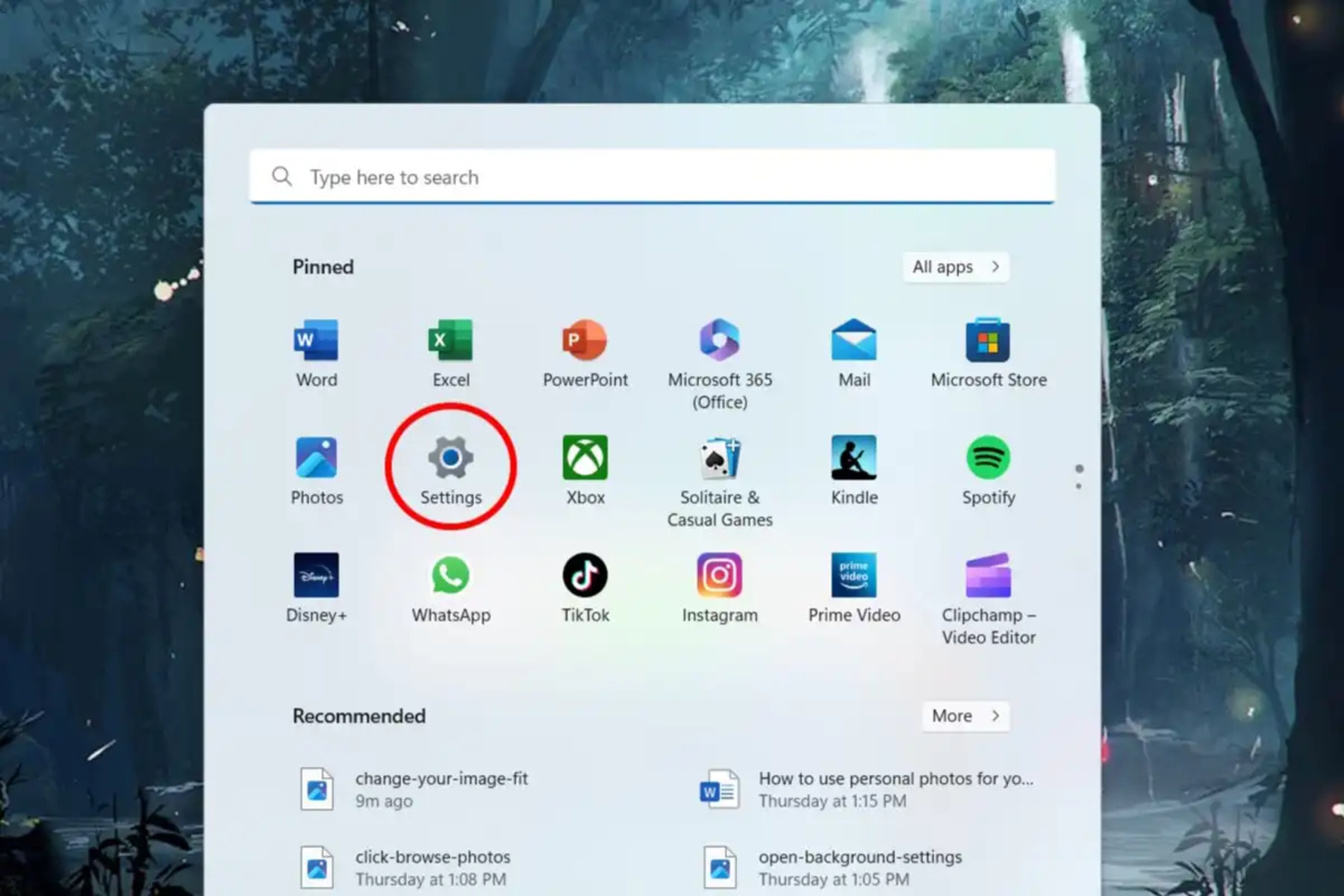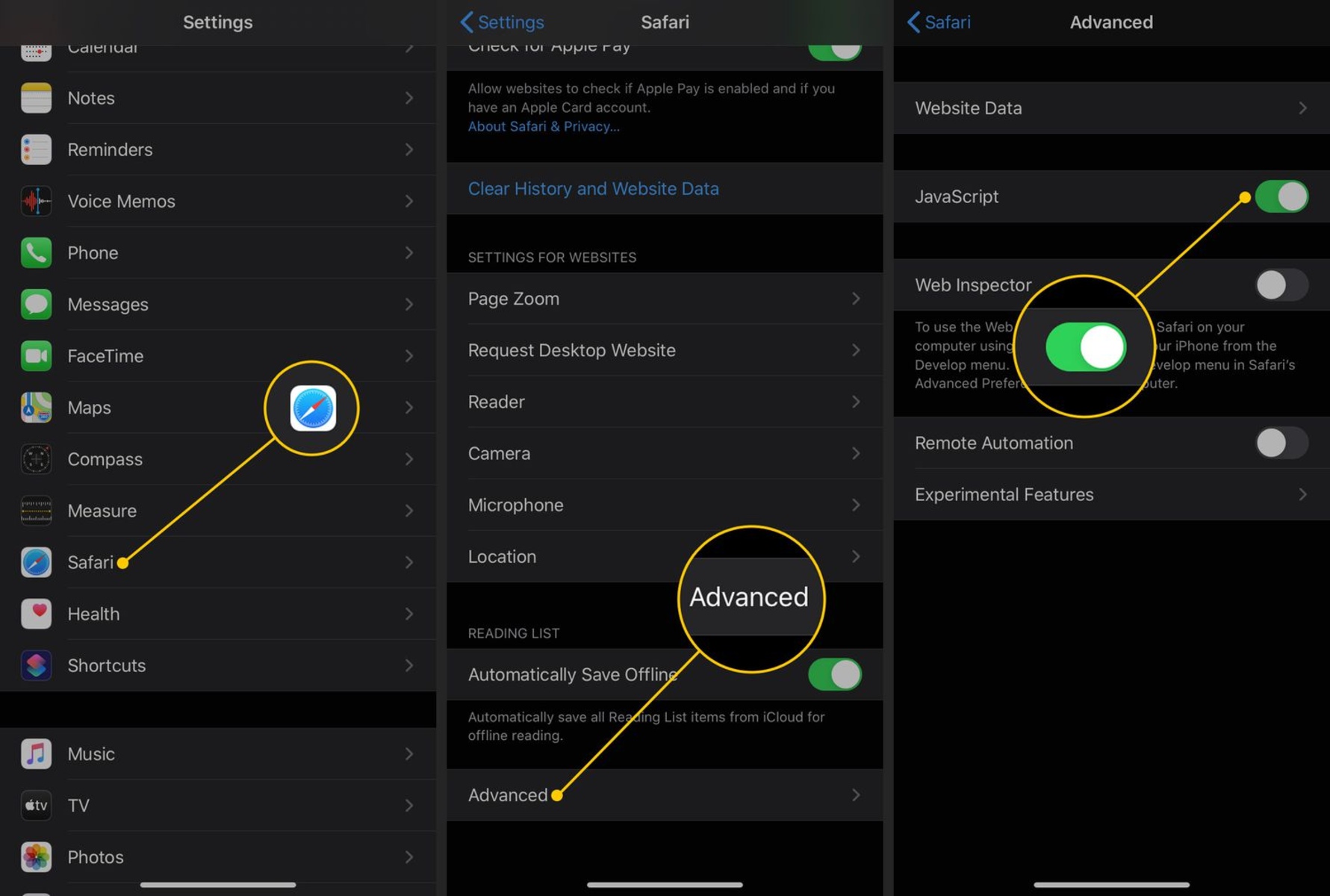Introduction
Safari, Apple's widely used web browser, is known for its sleek interface, robust security features, and seamless integration with the Apple ecosystem. However, what sets Safari apart is its array of experimental features designed to enhance the browsing experience. These features, though not yet fully polished, offer a glimpse into the future of web browsing and provide users with the opportunity to test cutting-edge functionalities.
By enabling these experimental features, users can gain access to innovative tools and technologies that may eventually become standard in future browser updates. This article will delve into five such experimental features available in Safari, shedding light on their potential benefits and how they can elevate the browsing experience.
From the convenience of tab organization to the optimization of graphics and multimedia performance, Safari's experimental features cater to a diverse range of user needs. Whether you're a casual web surfer or a power user seeking advanced functionalities, exploring these experimental features can unveil a world of possibilities within the Safari browser.
Let's embark on a journey through the uncharted territories of Safari's experimental features, where the boundaries of traditional browsing are pushed, and the potential for a more immersive, efficient, and secure web experience awaits.
Feature 1: Tab Groups
Tab management is a common challenge for many internet users, especially those who engage in extensive research, multitasking, or simply enjoy keeping multiple tabs open for various purposes. Safari's experimental feature, Tab Groups, offers a solution to this conundrum by introducing a streamlined approach to organizing and accessing multiple tabs.
Enabling Tab Groups empowers users to categorize their open tabs into distinct groups, each representing a specific topic, project, or workflow. This feature not only declutters the tab bar but also enhances productivity by allowing users to switch between tab groups seamlessly. Whether it's separating work-related tabs from personal browsing or grouping tabs based on different research topics, Tab Groups provide a structured and efficient way to manage web content.
By creating and customizing tab groups, users can maintain a clear overview of their browsing sessions, reducing the cognitive load associated with navigating through a multitude of open tabs. This organization fosters a more focused and organized browsing experience, enabling users to stay on top of their tasks and interests without feeling overwhelmed by tab overload.
Moreover, Safari's Tab Groups feature syncs across devices, ensuring a consistent browsing experience across Mac, iPhone, and iPad. This seamless synchronization allows users to transition between devices while retaining their tab groupings, thereby facilitating a cohesive browsing experience regardless of the platform being used.
From a user experience perspective, Tab Groups in Safari contribute to a more intuitive and user-friendly browsing environment. The ability to label, rearrange, and manage tab groups with ease adds a layer of personalization and control, catering to individual preferences and browsing habits.
In essence, Safari's Tab Groups experimental feature represents a significant step towards enhancing tab management, offering users a practical and efficient way to organize their browsing sessions. By embracing this feature, users can streamline their web exploration, boost productivity, and maintain a structured digital workspace, ultimately transforming the way they interact with the internet through the Safari browser.
Feature 2: Back-Forward Cache
Safari's Back-Forward Cache is a pioneering experimental feature designed to revolutionize the browsing experience by optimizing navigation between previously visited web pages. This innovative functionality aims to eliminate the delay often experienced when users revisit a page using the back or forward buttons, thereby enhancing the overall fluidity and responsiveness of the browsing journey.
By enabling the Back-Forward Cache feature, Safari proactively stores web pages that users have recently visited, including their full state, such as scroll position, form data, and JavaScript-generated content. This proactive caching mechanism ensures that when users navigate back or forward within their browsing history, the targeted web pages load almost instantaneously, mimicking a seamless transition between pages.
The impact of the Back-Forward Cache is particularly pronounced in scenarios where users frequently navigate between a small set of web pages, such as when conducting research, referencing multiple sources, or revisiting specific content during a browsing session. Instead of reloading the entire page from the server, Safari leverages the cached data to swiftly render the previously visited pages, significantly reducing loading times and enhancing the browsing efficiency.
This experimental feature not only enhances the user experience by minimizing wait times but also contributes to conserving bandwidth and reducing server load. By intelligently caching and reusing web page data, Safari's Back-Forward Cache optimizes network utilization, particularly beneficial for users with limited data plans or those accessing the internet in bandwidth-constrained environments.
Furthermore, the implementation of the Back-Forward Cache aligns with Safari's commitment to privacy and security. By locally caching web page data, Safari reduces the frequency of server requests when navigating back and forth, thereby mitigating potential privacy risks associated with excessive data exchange between the browser and external servers.
In essence, Safari's Back-Forward Cache experimental feature represents a significant advancement in optimizing the browsing experience, offering users seamless navigation between previously visited web pages while promoting efficiency, bandwidth conservation, and privacy-conscious browsing practices. By embracing this feature, users can enjoy a more responsive and streamlined browsing journey, characterized by swift transitions and reduced loading times, ultimately redefining the way they interact with web content through the Safari browser.
Feature 3: WebGPU
WebGPU represents a groundbreaking experimental feature within Safari, poised to revolutionize the graphical capabilities of web applications and games. This cutting-edge technology introduces a low-level, high-performance graphics API designed to leverage the full potential of modern GPUs, unlocking unprecedented visual fidelity and computational power within web-based environments.
By enabling WebGPU, Safari users gain access to a sophisticated graphics rendering framework that transcends the limitations of traditional web graphics APIs. This feature empowers developers to harness the parallel processing capabilities of GPUs, enabling complex visual effects, advanced rendering techniques, and immersive graphical experiences previously confined to native applications.
WebGPU's low-level nature grants developers fine-grained control over GPU resources, facilitating efficient utilization of hardware acceleration for rendering complex scenes, simulations, and visualizations. This level of control not only enhances graphical performance but also paves the way for innovative web-based applications that rival the visual quality and interactivity of their desktop counterparts.
Moreover, WebGPU's architecture is designed to align with modern GPU hardware, enabling seamless integration with the latest advancements in graphics technology. This compatibility ensures that web applications leveraging WebGPU can capitalize on the evolving capabilities of GPUs, delivering cutting-edge visual experiences that push the boundaries of web-based content creation and consumption.
From a user perspective, the adoption of WebGPU translates into a more immersive and visually captivating web experience. Whether engaging with interactive web applications, exploring virtual environments, or enjoying graphically rich web-based games, users can expect heightened visual fidelity, fluid animations, and responsive interactions, all powered by the underlying capabilities of WebGPU.
Furthermore, the introduction of WebGPU signifies a paradigm shift in the democratization of advanced graphics technology, as it enables a broader spectrum of developers to create visually stunning web content without being encumbered by the complexities of traditional graphics programming.
In essence, WebGPU stands as a testament to Safari's commitment to advancing web technologies, offering users and developers a gateway to a new era of visually compelling and performance-driven web experiences. By embracing this experimental feature, users can anticipate a future where web-based graphics rival the sophistication of native applications, ushering in a transformative era of graphical excellence within the Safari browser.
Feature 4: WebCodecs
WebCodecs, an experimental feature within Safari, represents a pivotal advancement in the realm of multimedia processing and playback on the web. This groundbreaking functionality introduces a standardized set of APIs designed to facilitate efficient encoding and decoding of audio and video content, transcending the limitations of traditional web media handling.
Enabling WebCodecs in Safari unlocks a wealth of possibilities for developers and content creators, empowering them to deliver high-quality multimedia experiences with enhanced performance and flexibility. By leveraging the WebCodecs APIs, developers can seamlessly integrate audio and video content into web applications while optimizing resource utilization and ensuring broad compatibility across devices and platforms.
One of the key advantages of WebCodecs lies in its ability to streamline the processing and rendering of multimedia content, leading to improved performance and reduced overhead during media playback. This efficiency is particularly beneficial for web-based applications that rely heavily on audio and video elements, such as video conferencing platforms, streaming services, and interactive multimedia experiences.
Furthermore, WebCodecs fosters a standardized approach to multimedia handling, promoting interoperability and consistency across web browsers and devices. This standardization not only simplifies the development and deployment of multimedia-rich web applications but also enhances the user experience by ensuring seamless media playback across diverse environments.
From a user perspective, the adoption of WebCodecs translates into smoother, higher-quality audio and video playback within web applications, complemented by improved resource management and reduced reliance on proprietary media plugins. Whether engaging with immersive multimedia content, participating in real-time communication, or consuming streaming media, users can expect a more seamless and responsive experience, underpinned by the capabilities of WebCodecs.
Moreover, the introduction of WebCodecs aligns with Safari's commitment to advancing web standards and empowering developers to create compelling, interoperable multimedia experiences. By embracing this experimental feature, users can anticipate a future where multimedia content on the web is characterized by enhanced performance, broader compatibility, and a consistent playback experience, ultimately redefining the landscape of web-based audio and video delivery within the Safari browser.
Feature 5: WebHID
WebHID stands as a transformative experimental feature within Safari, poised to revolutionize the way web applications interact with human interface devices (HID). This pioneering functionality introduces the WebHID API, which empowers web developers to seamlessly integrate and interact with a diverse range of HID devices, including game controllers, keyboards, mice, and other input devices, directly within web applications.
Enabling WebHID in Safari unlocks a realm of possibilities for developers seeking to create immersive and interactive web experiences that leverage the capabilities of HID devices. By harnessing the WebHID API, developers can design web applications that respond to user input from HID devices, enabling enhanced interactivity, precise control, and tailored user experiences across a myriad of web-based scenarios.
One of the key advantages of WebHID lies in its ability to bridge the gap between native applications and web-based experiences, particularly in the realm of gaming, virtual reality, and interactive media. With WebHID, web developers can access and utilize the full spectrum of input data from HID devices, enabling the creation of engaging gaming experiences, immersive virtual environments, and interactive web applications that rival the responsiveness and precision of native software.
Furthermore, the adoption of WebHID fosters a standardized approach to HID device integration, promoting interoperability and consistency across web browsers and platforms. This standardization not only simplifies the development and deployment of HID-enabled web applications but also enhances the user experience by ensuring seamless device compatibility and consistent interaction paradigms across diverse web environments.
From a user perspective, the integration of WebHID translates into a more dynamic and engaging web experience, particularly in the realms of gaming, virtual reality, and interactive media consumption. Whether navigating virtual worlds, controlling web-based applications, or engaging in immersive gaming experiences, users can expect heightened responsiveness, precise input recognition, and seamless integration of HID devices, all facilitated by the capabilities of WebHID.
Moreover, the introduction of WebHID aligns with Safari's commitment to advancing web standards and empowering developers to create compelling, interoperable web experiences. By embracing this experimental feature, users can anticipate a future where web applications seamlessly integrate with HID devices, offering immersive and interactive experiences that blur the lines between native and web-based software, ultimately redefining the landscape of user interaction within the Safari browser.
Conclusion
In conclusion, Safari's experimental features represent a gateway to a future where web browsing transcends conventional boundaries, offering users and developers a glimpse into the possibilities of a more immersive, efficient, and secure online experience. From the organizational prowess of Tab Groups to the performance optimizations of Back-Forward Cache, and the groundbreaking capabilities of WebGPU, WebCodecs, and WebHID, Safari's experimental features collectively pave the way for a transformative evolution in web browsing.
By embracing these experimental features, users can unlock a world of innovation, where tab management becomes a structured and personalized endeavor, multimedia experiences are elevated to new heights, and the integration of HID devices enriches web-based interactions. These features not only cater to the diverse needs of users but also empower developers to create compelling, interoperable web experiences that rival the sophistication of native applications.
Furthermore, Safari's commitment to standardization, interoperability, and user-centric design is evident in the seamless synchronization of Tab Groups across devices, the privacy-conscious approach of the Back-Forward Cache, and the democratization of advanced graphics and multimedia technologies through WebGPU, WebCodecs, and WebHID. This dedication to advancing web standards ensures that users can expect a consistent and refined browsing experience, characterized by enhanced performance, broader compatibility, and a seamless transition between devices.
As the digital landscape continues to evolve, Safari's experimental features stand as a testament to the browser's dedication to pushing the boundaries of web technology. By embracing these features, users not only gain access to cutting-edge functionalities but also contribute to the ongoing refinement and evolution of the web browsing experience.
In essence, Safari's experimental features offer a glimpse into the future of web browsing, where innovation, performance, and user experience converge to redefine the possibilities of online interaction. As these features continue to evolve and integrate into the fabric of web standards, users can anticipate a future where the Safari browser remains at the forefront of delivering a seamless, secure, and captivating web experience, driven by the pioneering spirit of experimental features.

























